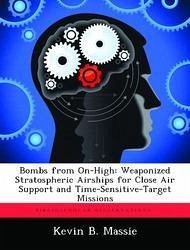This paper begins by conducting an environmental scan of stratospheric airships to determine likely qualities of persistence, cost effectiveness, survivability, and payload capacity based upon current and projected technology. It will also examine the status of small precision munitions as well as the potential WSA missions of close air support (CAS) and time-sensitive-targets (TST). The paper will then develop two WSA variants, the MZ-1 operating at 75,000 feet and the MZ-2 operating at 125,000 feet. As a thought experiment aimed at examining the strengths and weaknesses of the concept, the paper then applies these variants against two wartime scenarios: the low-intensity conflict of Operation Iraqi Freedom and the near-peer conventional conflict of a Chinese invasion of Taiwan.
Hinweis: Dieser Artikel kann nur an eine deutsche Lieferadresse ausgeliefert werden.
Hinweis: Dieser Artikel kann nur an eine deutsche Lieferadresse ausgeliefert werden.








